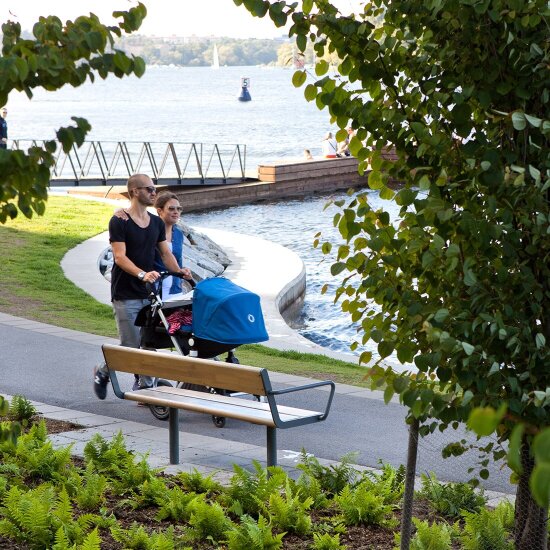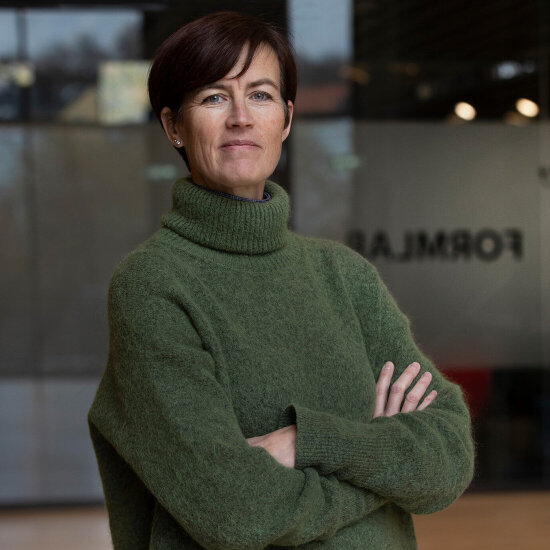Inspired by nature, sustainability and collaboration, today’s Norwegian designers offer a fresh approach to the international design scene.
Norwegian design can be described as pure, minimalistic and functional, using natural materials, and the dark nights and long winters indoors have made Norwegian designers specialists in comfort lighting, interior products and high-quality furniture.
Our designers draw inspiration from forests, fjords and mountains, but still have an international approach. Globalisation has brought Norway much closer to the international design scene, and as the Norwegian market is relatively small, many young designers collaborate with international manufacturers.
From Møre to Milano
Whereas our Scandinavian neighbours have well-known legends like Arne Jacobsen and Alvar Aalto, the Norwegian design icons are less known. For the younger generations, this might actually be an advantage, because they are free to innovate away from expectations of a design heritage, and they can develop their own unique and modern interpretation of their Norwegian legacy.
The Norwegian furniture and interior industries have a long history. It all started in the early 1900s, in the Sunnmøre region on the west coast of Norway. With easy access to natural materials, strong local crafts traditions and an available workforce, furniture making started as a home industry on local farms, and soon there were around 100 small manufacturers in the area. During the 1930s the Norwegian economy was in critical need of revitalisation, and the furniture industry was professionalised and grew stronger.
Paved the way for Norwegian exports
Collaborations with aspiring designers and interior architects, combined with innovative production techniques, took the industry to new heights during the 1950s and 60s and Norwegian design won international recognition as a part of the Scandinavian Design movement, characterised by simplicity, minimalism, functionality and affordability.
The Dokka pendant, designed in 1954 by Birger Dahl was the first Norwegian lamp to be awarded a Gold Medal at the prestigious Triennale di Milano, and internationally renowned chairs such as the Scandia Junior, designed by Hans Brattrud, Planet by Sven Ivar Dysthe and Siesta by Ingmar Relling paved the way for Norwegian exports, and are still being manufactured today.
Stressless
Only a few of the original furniture factories in Sunnmøre remain, but the ones who survived international competition, are still going strong. Most famously, Ekornes is Norway’s biggest manufacturer, making 1500 Stressless reclining chairs a day, most of them shipped abroad.
Also successful is Fora Form, whose history was defined by Øivind Iversen’s City chair. Fora Form is now one of Scandinavia’s leading suppliers of furniture for the contract market, collaborating with some of Norway’s top designers.
Timeless and ergonomic
The most famous piece of Norwegian furniture, and a commercial success with 10 million sold around the world, is the Tripp Trapp children’s chair designed by Peter Opsvik in 1972, still made by Stokke. With its timeless and ergonomic design, adjustable seat and durable materials, it is meant to grow with the child and be passed on to the next generations, making it the chair most children in Norway have grown up in.


Photo: Adam Stirling
Recycled and recyclable materials
Peter Opsvik is also one of many leading designers who has had a long term collaboration with Håg, a Norwegian manufacturer that has made chairs in the old mining town of Røros for over 60 years. After reinventing themselves with ergonomic office chairs in the mid-70s, Peter Opsvik redefined office sitting with the saddle-inspired Håg Capisco in 1984.
The shape encourages active movement and alternative sitting positions, increasing blood circulation and energy. Håg Capisco was also the first office chair in the world with a recognised eco-label, and Håg - now part of the Flokk group - has since committed to reducing energy consumption, minimalising waste, using recycled and recyclable materials and avoiding harmful chemicals.
Redefining Norwegian design
In 1999, a group of five young designers called Norway Says, wanting to renew the idea of the traditional Norwegian and Scandinavian design, broke through internationally at the 2000 Salone Satellite in Milano as the first Norwegian contribution in 40 years. With a modern, minimalistic and playful approach, Norway Says designed a variety of products, such as furniture for Norwegian manufacturer Hjelle and cutlery, furniture fabric and kitchen products for Danish Muuto.
After 10 successful years, the founding members parted ways but are still enjoying international success as Anderssen&Voll and Andreas Engesvik. Norway Says was an inspiration and opened new doors for the next generation of Norwegian designers, often offering them a helping hand, collaborations or internships to help advance their careers.
International awards
Another young designer pushing the limits of design is Daniel Rybakken, whose work includes experimenting with and creating illusions of natural daylight. Amongst others, Rybakken designs lamps for Italian Luceplan and has received several prestigious international awards, including the Compasso d’Oro.
Manufacturer Northern has also been an important contributor to revitalising Norwegian design, bringing iconic lamps such as the Dokka pendant back to life and giving young designers a springboard. Now, the company also makes furniture and accessories, and its products can be found all over the world.
Changing the world with furniture
Other manufacturers are also responsible for Norway’s strong reputation today, and Vestre especially stands out. A family run manufacturer of durable furniture for outdoor public spaces, they have been creating social meeting places all over Norway for over 70 years, and recently supplied furniture to the Snøhetta redesigned Times Square in New York.
The company believes in long-lasting and high-quality products, and all manufacturing takes place in Sweden and Norway with renewable energy, locally sourced Scandinavian materials and minimal use of resources; they even use electric delivery trucks. Vestre collaborates with leading Scandinavian designers, such as Norwegian Kristine Five Melvær, Atle Tveit and Lars Tornøe to name a few, and has a philosophy that good design should be democratic and brought to public places for everyone to enjoy.
Collaborating for a sustainable future
As a country large in area, but with a smaller industry than our international competitors, the Norwegian furniture and interior design scene finds strength in collaboration. Several initiatives have been launched during the recent years.
Started by young designers Victoria Günzler, Sara Wright Polmar and Sverre Uhnger in 2011, Klubben was formed as a network now consisting of 31 up and coming Norwegian furniture and product designers, including Hallgeir Homstvedt, Runa Kloch, Hunting & Narud, Vera & Kyte, Stine Aas and Kristine Bjaadal. They aim to promote Norwegian design nationally and internationally and to increase collaboration between designers and the industry, based on the idea that working together can be a great advantage.
Global ambitions
In 2016, designers and manufacturers from the furniture industry, design organisations and educational institutions joined forces to establish a collaborative initiative called Samarbeidsrådet for møbel og interiør (SMI). The ambition is to strengthen the design and furniture industry and increase export of sustainable Norwegian design products and solutions.
To showcase the future of design, Norwegian designers, manufacturers and institutions such as Design and Architecture Norway (DOGA), Klubben and Norwegian Crafts, with support from the Norwegian Ministry of Foreign Affairs, unite every year for the exhibition Norwegian Presence during Milano Design Week, regularly described by international design press as one of the highlights. The 2019 exhibition pays tribute to the spirit of Norwegian collaboration and the design for a sustainable future.
Global ambitions
As a high-cost country, Norway can't compete on price, but companies such as Vestre and Håg have proven that quality, sustainability and design can also be good business. Currently riding a wave of international interest in most things Scandinavian, Norwegian design is a strong collective force with global ambitions.

